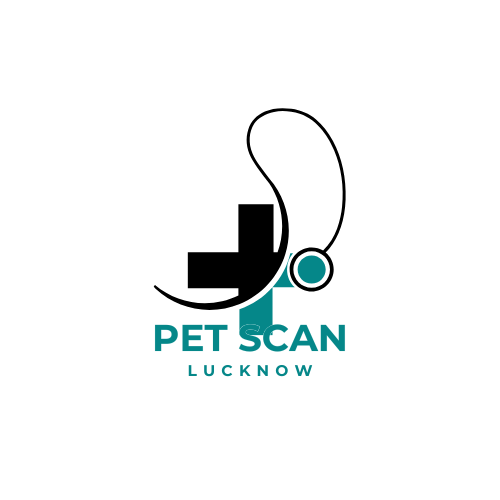After undergoing a PET (Positron Emission Tomography) scan, many patients wonder about the radioactive material used during the procedure and how it might affect them and those around them.
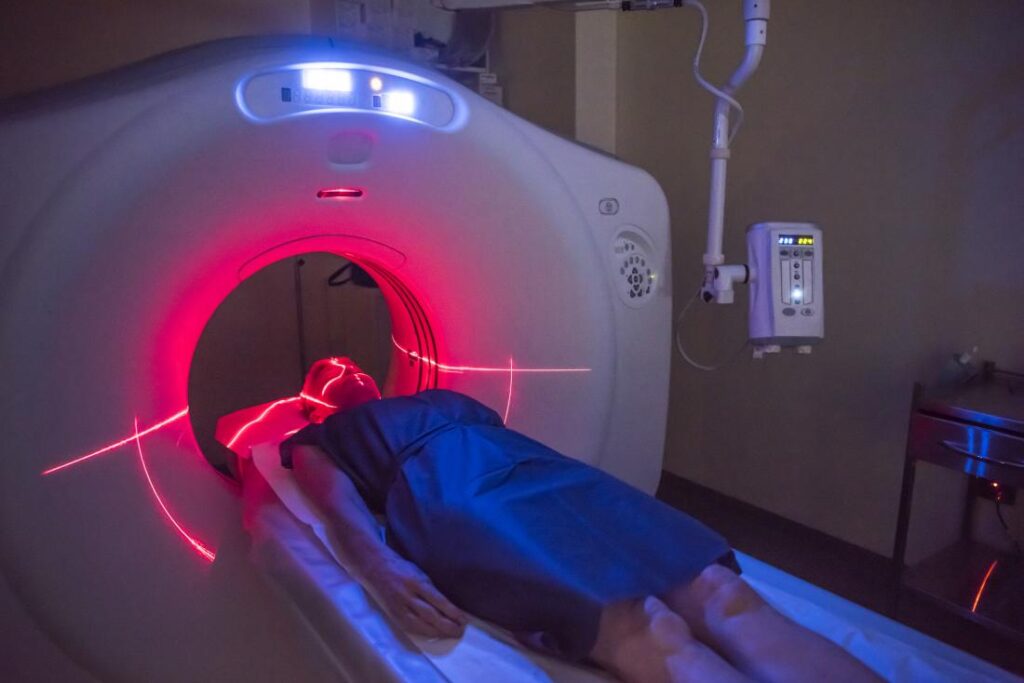
We will help you understand after PET scan how long are you radioactive, how long the radioactive elements remain in your body, and practical steps to ensure your comfort and safety during recovery.
Life After Your PET Scan
When you undergo a PET scan, you receive a small amount of radioactive glucose (sugar) called a tracer. This tracer emits radiation that allows specialized equipment to create detailed images of your body’s internal functions. The good news is that the radioactive material used is specifically designed to be temporary and quickly eliminated from your body.
How long does the radioactivity last?
The radioactive tracer used in PET scans (typically F-18 FDG) has a relatively short half-life of about 110 minutes. This means that every 110 minutes, half of the remaining radioactivity disappears. Within 24 hours, the radioactivity will have diminished to a negligible level—less than 1% of the initial dose remains after this time.
For most patients, the practical period of meaningful radioactivity is about 6-12 hours after injection. By the following day, your body will naturally eliminate almost all traces of the radioactive material through normal bodily functions like urination.
Returning to Your Normal Routine
The minimal radioactivity from a PET scan means you can return to most normal activities shortly after the procedure. Here’s what you can expect:
Immediately after your scan:
- You’ll be encouraged to drink plenty of water to help flush the tracer from your system.
- Your medical team will provide specific instructions based on your individual circumstances.
- You can leave the medical facility and return home without special transportation requirements.
Within the first 6-12 hours:
- Maintain good hydration by continuing to drink plenty of fluids.
- Use the restroom frequently to help eliminate the tracer through urine.
- You may resume your regular diet immediately.
By the next day:
- The radioactive materials will have been almost entirely eliminated from your body.
- You can fully resume all normal activities without concerns about radioactivity.
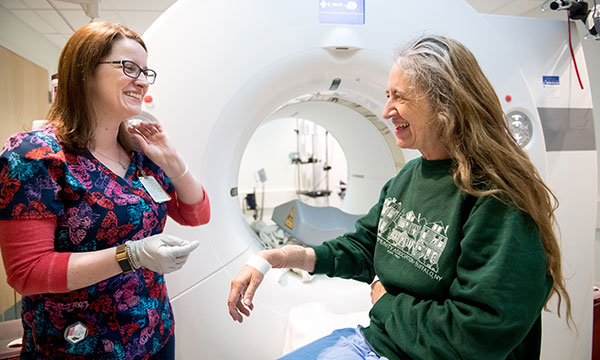
Safety Measures and Considerations
While the radioactivity from a PET scan is minimal and temporary, following these simple precautions during the first 6-12 hours can provide extra peace of mind:
Interacting with others:
- Limiting prolonged close contact (within 3 feet) with pregnant women and young children is a precautionary measure during the first 6 hours.
- Brief interactions, even with these groups, pose minimal risk.
- Without concern, you can remain in the same room with family members, including children.
Managing bodily fluids:
- Wash your hands thoroughly after using the restroom.
- Clean up any spilled urine promptly with soap and water.
- Men may wish to sit while urinating to avoid splashing.
- Flush the toilet twice after use on the first day.
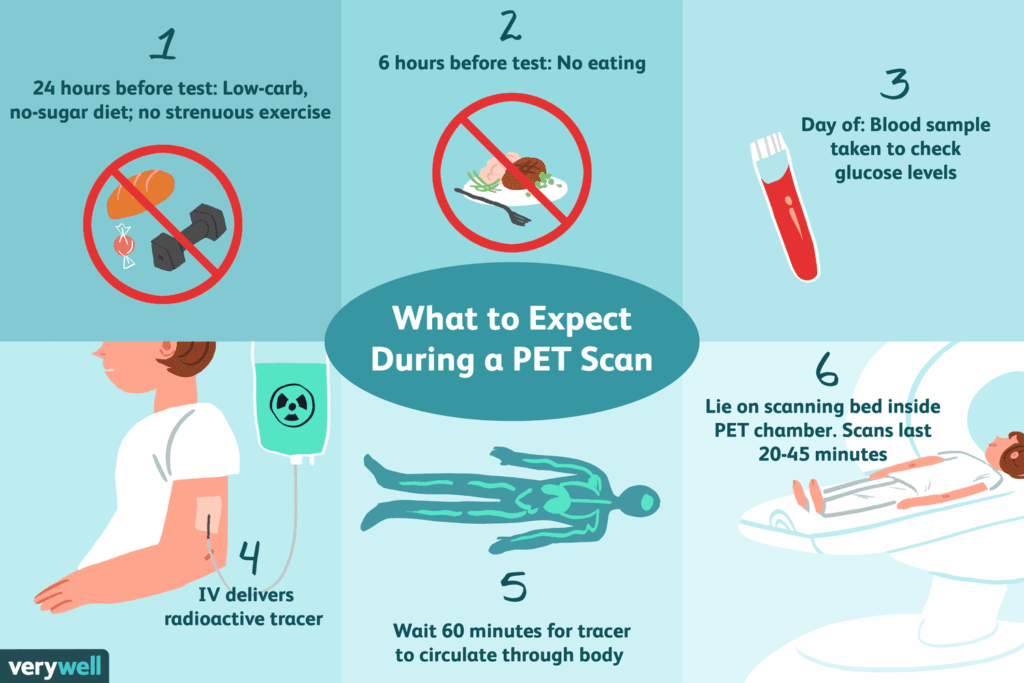
Physical proximity:
- You can sleep in the same bed as your partner, though some patients choose to maintain a slight distance the first night as an extra precaution.
- Public transportation is fine, though if your scan was in the morning, you might prefer to avoid lengthy, close-quarters travel later that same day.
Caring for Your Overall Well-being
Many patients report feeling tired after a PET scan. This fatigue typically results from the procedure itself—fasting beforehand, the duration of the scan, and the natural stress that can accompany medical testing, rather than from the radioactive tracer.
For your comfort:
- Rest if you feel tired, but don’t feel you need to restrict your activities unnecessarily.
- Resume eating normally, focusing on nutritious foods.
- Try to engage in pleasant, distracting activities to minimize any anxiety about your test results.
- Remember that the procedure itself is completely painless, and any discomfort from the IV insertion is temporary.
Putting Your Mind at Ease
It’s completely natural to feel concerned about after pet scan how long are you radioactive. Rest assured that medical imaging procedures like PET scans use the minimum amount of radioactive material necessary to obtain valuable diagnostic information. The benefits of having clear information about your health condition far outweigh the minimal, temporary exposure to radiation.
Medical teams are extensively trained in radiation safety and carefully calculate appropriate doses for each patient. The radioactive tracers used in modern medical imaging are designed specifically for their temporary nature and quick elimination from the body.
Remember that you receive more radiation exposure from natural environmental sources over the course of a year than from a single PET scan. The medical community has been safely using these procedures for decades with rigorous safety protocols in place.
Frequently Asked Questions
Can I be around my pets after a PET scan?
Yes, you can interact normally with your pets immediately after the scan. The minimal radiation you emit poses no risk to animals.
When can I resume exercise after a PET scan?
You can resume exercise whenever you feel ready, even on the same day as your scan. Listen to your body—gentle activities might be better initially if you feel tired.
Do I need to take special precautions with food or drinking water?
No special dietary restrictions are necessary after your scan. In fact, drinking plenty of fluids is beneficial as it helps eliminate the tracer more quickly.
Can I breastfeed after having a PET scan?
If you’re breastfeeding, you may need to temporarily pause for 12-24 hours, depending on the specific tracer used. Your medical team will provide exact guidance for your situation.
Will I set off radiation detectors at airports or security checkpoints?
It’s possible, though unlikely, that you might trigger sensitive radiation detectors within 24 hours of your scan. If you’re traveling within this timeframe, request a note from your medical provider explaining your recent procedure.
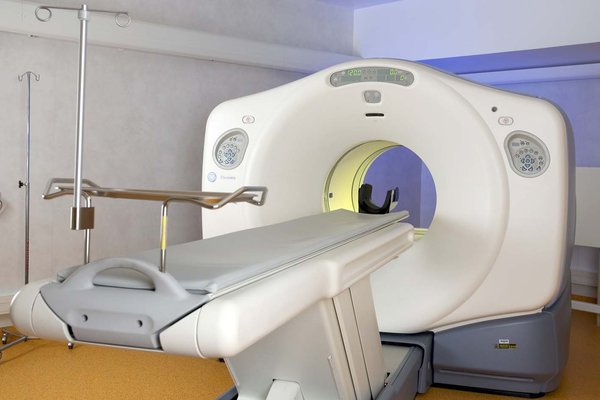
Moving Forward
As you wait for your results, try to focus on self-care activities that promote your overall well-being. Maintain your normal routine as much as possible, engage in enjoyable activities, and reach out to our support network if you find yourself experiencing anxiety about the upcoming results.
Don’t hesitate to talk to us if you have additional questions or concerns about your PET scan or recovery. We’re here to support you through every step of your care journey and can address any specific concerns related to your health situation.
Remember that this scan is an important tool helping your medical team provide you with the best possible care, and any temporary inconvenience contributes valuable information to maintaining or improving your health.
